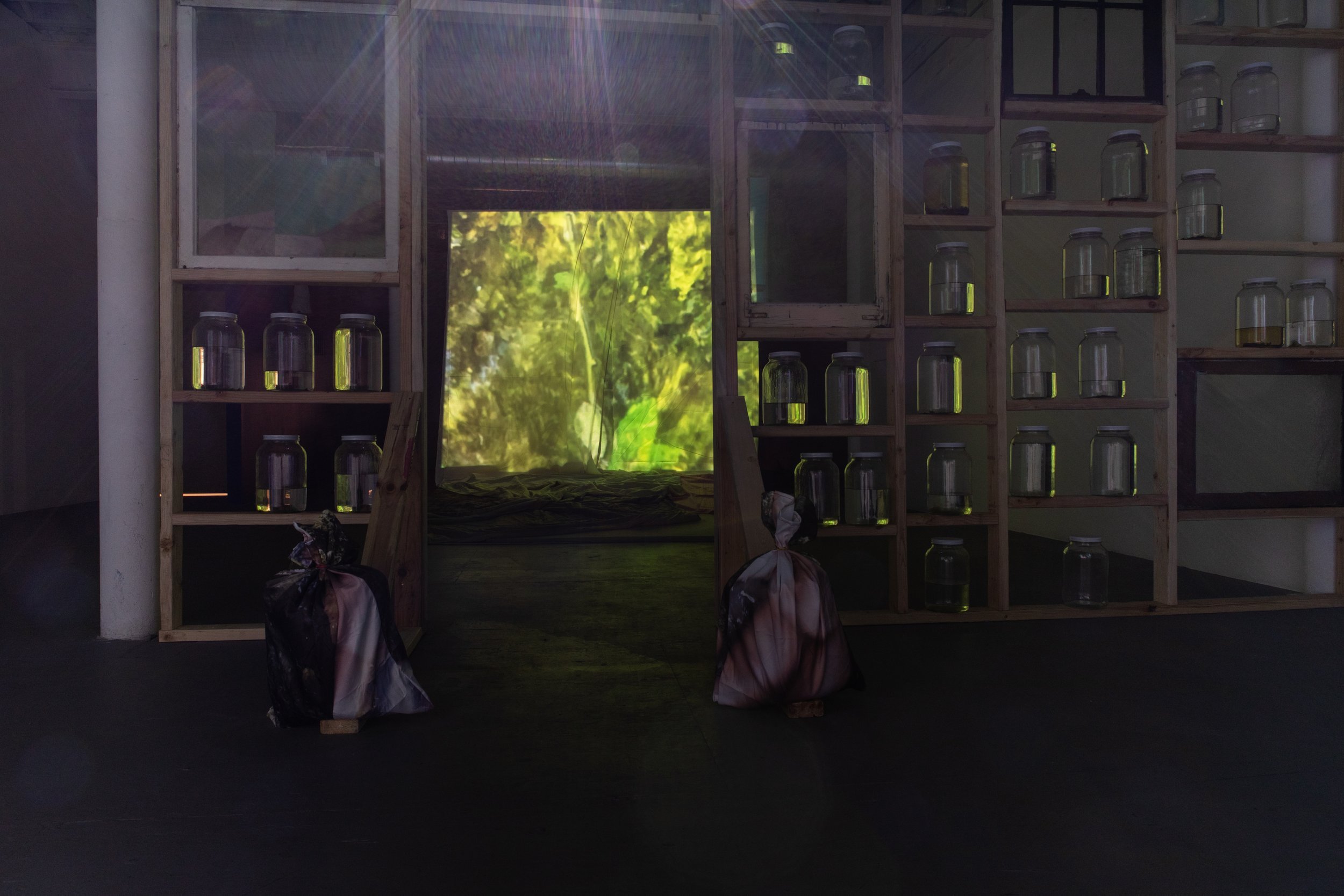split my sides
The Luminary
April 9 - July 16, 2022
Featuring new and recent works by Amina Ross and Lola Ayisha Ogbara
Curated by Stephanie Koch, Interim Executive Director
“Our landscape is its own monument: its meaning can only be traced on the underside…” - Édouard Glissant, Caribbean Discourse: Selected Essays, 1989
split my sides features new and recent works by Lola Ayisha Ogbara and Amina Ross as they consider the spatial relationship between place and interiority. The exhibition's title derives from Maya Angelou’s poem and performance, “The Mask,” in which she writes to honor the "survival apparatus" that Black people use to conceal pain through laughter:
When I think about myself
I almost laugh myself to death.
My life has been one great big joke!
A dance that's walked a song that's spoke.
I laugh so hard HA! HA! I almos' choke
When I think about myself.
Ogbara and Ross tend to this concealed space of the Black trans and feminine interior. As the pressures of living bear down on our desires, fears, dreams, and vulnerabilities, they constrict how we express selfhood, leaving cracks in our inner life. We feel compelled to hide this soft underside. You can't help but laugh.
But the intensities, challenges, and violence we experience are not inevitable or “just the way it goes.” Rather, systems of power link these circumstances to place through the construction of space. Seemingly natural and stable, space is imagined and produced to control how, when, and where we move. Spatio-temporal hierarchies are built (and protected) to threaten, constrict, and erase. Their scale may be global, or they may exist right around the corner. For those of us who are Black, queer, trans, and/or women, our experiences and struggles are intimately connected to the spaces in which we live: “Indeed, Black matters are spatial matters.”
Just as spatial power can physically displace and harm, these same spatial hierarchies press upon our interior lives, shaping how we define our selfhood and emotionally navigate our existence. We feel the need to grin and bear it. Like Angelou, Ogbara and Ross honor the tactics Black, queer, trans, and/or women employ to physically and mentally survive.
Yet, while Ogbara and Ross acknowledge the need to hide, they also unmask the emotional landscape within. In their soundscapes, you feel the polite grin crack. Ogbara’s A Bellow of My Laughter (Pt. 2) oscillates between bursts of frenetic laughter and stifled cries. In the film and sound piece Sonic Rupture: songs for(e) the swarm, Ross guides the actor through a flood of emotional states: “Try and imagine how you would feel.” As they pause and move inward, they burst out laughing. Their eyes well up, they breathe, they break, and then return.
Life continues between the spatial configurations that limit our freedom to move and feel as we want and need. There is the feeling of release and pleasure on a dance floor, the relaxation and restoration of finding a place to rest, the joy and lightness while at play on a front stoop. While spatial power builds and rebuilds, so do we, mutually creating our world. We imagine and develop the liberatory spaces needed to feel safe and thrive.
Through the natural forms of ceramic sculpture and the digital registers of sound and film, Ogbara and Ross spatialize the interior into an emotional geography with which we can engage. Their spatial and bodily knowledge splits the ground beneath our feet, freeing their position as they realize their sense of self.
- Stephanie Koch














![Lola+Ogbara,+Phantasmagoria_+Untitled+[#018],+2019.jpeg](https://images.squarespace-cdn.com/content/v1/5c095b23365f02291154355f/1659742714028-WHTXBHA2JD2ZTW4AAVVB/Lola%2BOgbara%2C%2BPhantasmagoria_%2BUntitled%2B%5B%23018%5D%2C%2B2019.jpeg)



